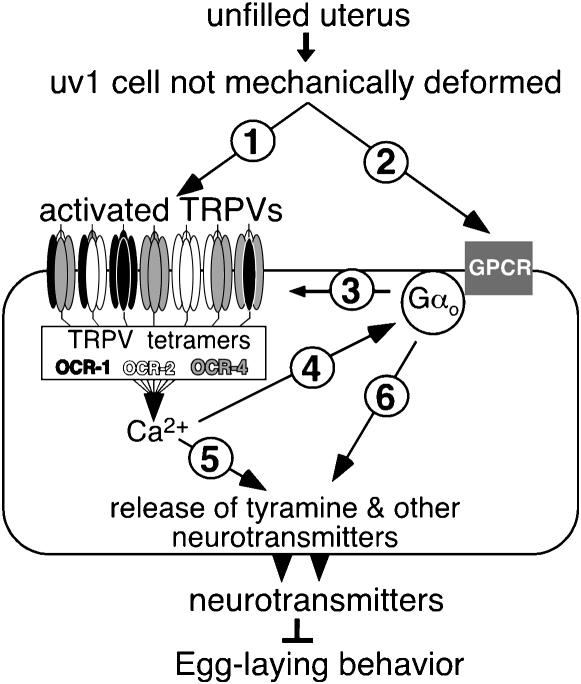Figure 8.—
Model for inhibition of egg laying until the uterus is filled with eggs. uv1 neurosecretory cells release tyramine and other neurotransmitters to inhibit egg-laying behavior until they are mechanically deformed by eggs in the uterus, and both heteromeric TRPV channels and the G-protein Gαo are required in uv1 cells for this release. The relationship among mechanical deformation of uv1, TRPV activity, and Gαo activity remains undetermined, leaving several possibilities consistent with the data. uv1 deformation could directly mechanically gate TRPV channels (arrow 1), affect Gαo via a G-protein-coupled receptor (GPCR, arrow 2), or activation of both TRPV channels and Gαo could be required in parallel. If mechanical deformation acts via the G protein, Gαo could activate the TRPV channels to allow entry of Ca2+, a known activator of neurotransmitter vesicle release (arrows 3 and 5). Alternatively, if the TRPV channels are directly mechanically gated by uv1 deformation, a model that remains formally consistent with our analysis is that TRPV channels activate the G protein to in turn activate neurotransmitter release (arrows 4 and 6).

